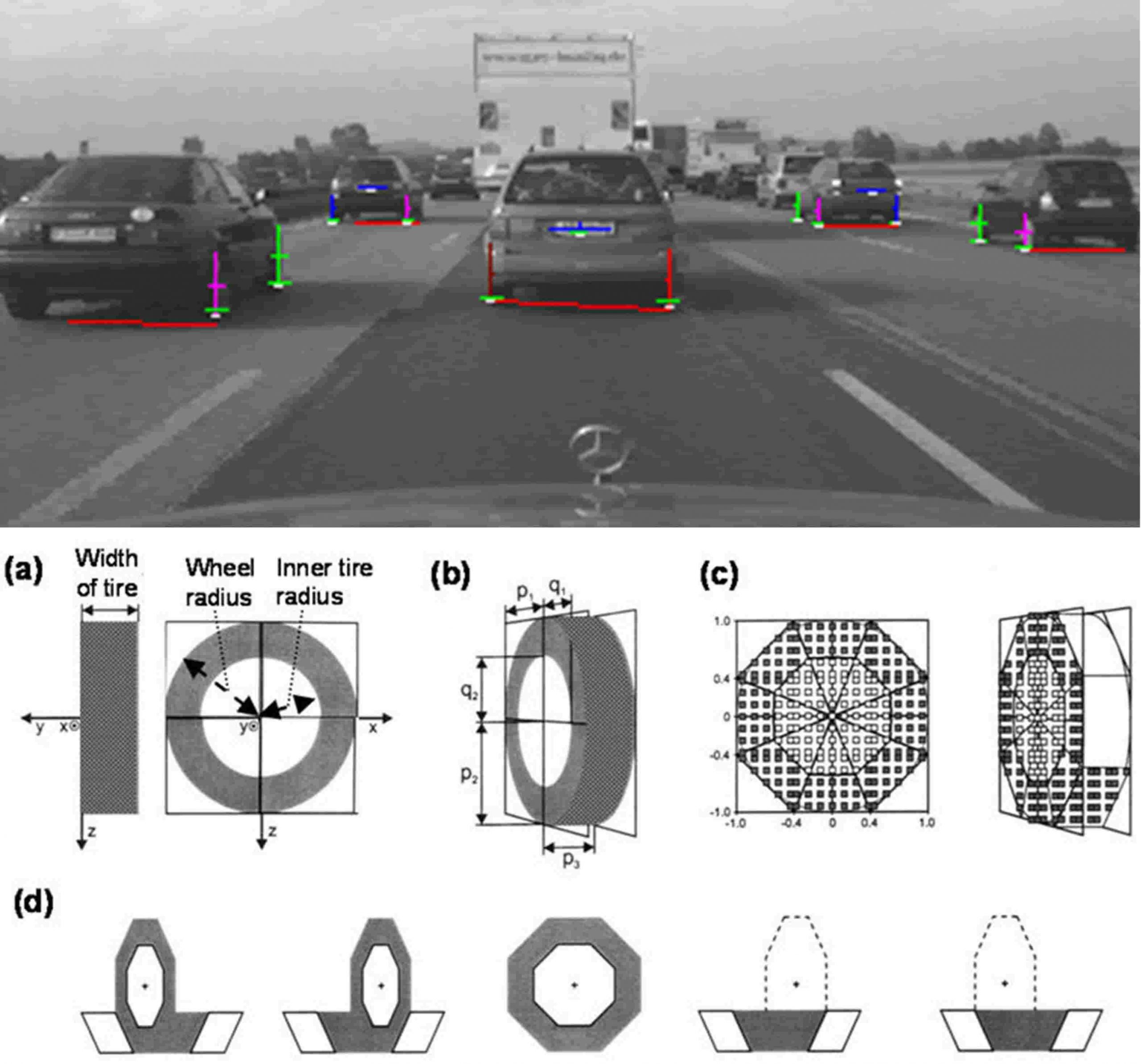A.3.6.2a Cruise control with multiple vehicle detection and tracking
A stable characteristic for detecting other vehicles is the dark region underneath the vehicle on the ground; the only exceptions found are tanker vehicles with cylindrical upper bodies and low standing sun. This fact has been used in 1994 for the final demonstration of the PROMETHEUS-Project on Autoroute A1 near Paris to
- show the capability of a bifocal vision system for detecting and tracking the distance to
- up to five other vehicles in the own and in neighboring lanes,
- both in the front- and in the rear hemisphere.
Only edge features with adjacent intensity regions in black-and-white image sequences at 12.5 Hz have been used by the transputer system for scene understanding.
H.1.2 Integrated Transputer System
This experience had led to the conclusion that for applications in crowded traffic scenes only the lower part of car bodies (h < 1m) needs to be considered; the upper parts, usually, showed extremely quick-changing features from reflections of the environment.
References
Brüdigam C (1994). Intelligente Fahrmanöver sehender autonomer Fahrzeuge in autobahnähnlicher Umgebung. Dissertation, UniBwM / LRT. Kurzfassg
Thomanek F, Dickmanns ED, Dickmanns D (1994). Multiple Object Recognition and Scene Interpretation for Autonomous Road Vehicle Guidance. In Masaki (ed): Proc. of Int. Symp. on Intelligent Vehicles ’94, Paris, pp 231-236. Abstract
Thomanek F, Dickmanns ED (1995). Autonomous Road Vehicle Guidance in Normal Traffic. Proc. ACCV ’95, Singapore
Thomanek F (1996). Visuelle Erkennung und Zustandsschätzung von mehreren Straßenfahrzeugen zur autonomen Fahrzeugführung. Dissertation, UniBwM / LRT. Kurzfassg
Dickmanns ED (2007). Dynamic Vision for Perception and Control of Motion. Springer-Verlag, (Sections 9.2 and 11.3) Content
A.3.6.2b Wheel recognition under oblique views
Circular wheels appear as close-to-elliptic shapes in perspective projection under angles further away both from the wheel plane and the axle direction. Since tires on wheels are dark, usually, and since they touch the road, they show characteristic edge- and area-based features which allow their recognition even though their upper parts disappear behind the car body (fenders). The stylized masks in the figure (left) have been developed by [Hofmann 2004] for wheel recognition under oblique views.
Reference
Hofmann U (2004). Zur visuellen Umfeldwahrnehmung autonomer Fahrzeuge. Dissertation, UniBwM, LRT, Kurzfassg

